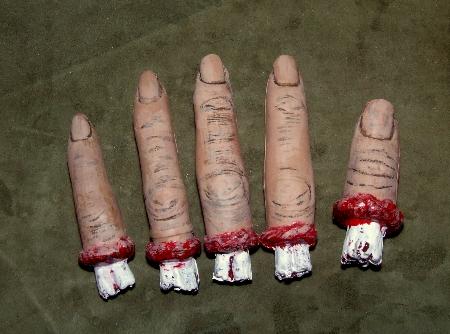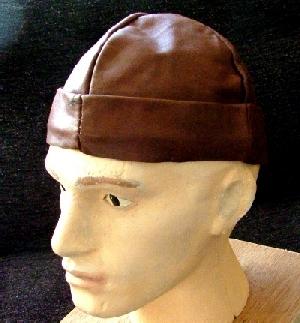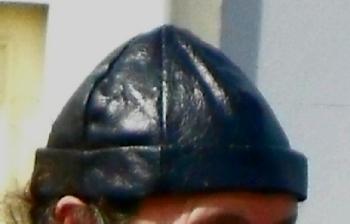-
Posts
5,931 -
Joined
Content Type
Profiles
Forums
Events
Blogs
Gallery
Everything posted by fredk
-
Just use ordinary paper patterns. Even the seam allowances are alright for leather seams My first choice for leather would be from Le Prevo : http://www.leprevo.co.uk/hides.htm Scroll down for the clothing leather. And the staff at Le Prevo will help with advice too
-
I get advertising emails from 'Ivan' I just got one about a range of hole punches; https://www.ivan.tw/products/craftplus-professional-drive-punches Interesting shape. And I wonder if that wider chute on the smaller sizes will make it easier to clear the punches of the plugs?
-
Sometimes the subject comes up ' does chrome tan leather affect steel' ? Today I got out of my EDC pouch a small pair of snippers. I'd made them a small sheath out of some chrome tan leather to cover the blades. The snippers have been in the pouch for months, unused until today. The bare metal blades had some mild corrosion on them
-
Just over a month ago Gezzer posted up a thread on a hatband he'd made In that thread I suggested getting some false fingers to put on the hatband I got the fingers. They are polythene plastic, not real ones (aww!) They were painted, very terribly, so I repainted them. They are about 50% bigger than real ones Now to find a use for them
-
There should be a letter before the number. The letter indicates which group the tool belongs, eg A = Backgrounders (mostly), B = Bevellers, P = Pear shaders, S = Seeders, et cetera
-

Prize Winning Hand Bag
fredk replied to Handstitched's topic in Purses, Wallets, Belts and Miscellaneous Pocket Items
Verily most very excellent ! Mucho congrats to you Craftsmanship will always win through -
We discussed that knife previously. Many other trades lay claim to it. If you shop around you can buy a good but cheaper one meant for another trade, such as carpet fitters or glaziers
-
I found my poly mallet was too light so recently I invested in a 24oz dead-blow mallet. I've not used it much but it has made a difference
-
The two ends look different sizes. I'm thinking this is a home made tool to have two commonly used straight screwdriver blades handy on one tool
-
yes it will. I find that a belly stretches more from back-bone to centre of belly than along the belly from leg to leg. Laminating it with a less stretchy section reduces the stretchiness
-

My first leather inlay
fredk replied to sbrownn's topic in Gun Holsters, Rifle Slings and Knife Sheathes
The chap I was talking to who showed me the metal parts soaked the parts in cellulose thinners. He did not explain why though. But that might have been to dissolve the plastic -

My first leather inlay
fredk replied to sbrownn's topic in Gun Holsters, Rifle Slings and Knife Sheathes
You can 3D print with metals. I've seen aluminium and brass -
A member posted this up; I have not used it so cannot vouch for it
-
More information required
-

Kangaroo skin bag
fredk replied to AndrewWR's topic in Purses, Wallets, Belts and Miscellaneous Pocket Items
I hope it is! -
Its not something I really looked for. But my 1.5mm thick c/t is harder to hand sew than 1.5 or even some 2mm veg. On these I use a glovers needle and just sew with no pre-made holes
-

Kangaroo skin bag
fredk replied to AndrewWR's topic in Purses, Wallets, Belts and Miscellaneous Pocket Items
@AndrewWR thank you. I'm waiting on an investment dividend to be paid and I might buy some of this 'ere Kanga hide What ever would Poo think! -

Kangaroo skin bag
fredk replied to AndrewWR's topic in Purses, Wallets, Belts and Miscellaneous Pocket Items
That looks very nicey indeedy Your design sounds like the style of bag I'm supposed to be making for no.1 dottir Where did you get the kangaroo hide from? -
I'm a little concerned about what you bought. It sounds like it has a cheap sprayed on top finish. All the chrome tan I use, and I do use a lot, is dyed thru and will not scuff at all, one of the main reasons I use it on certain projects. Certain areas on the projects will buff a bit through wear on that area, but that's after several years of use. You say Neat-lac took 'out that scuff mark and it doesn't seem to scuff as easily'. The Neat-lac is giving a harder top surface but the problem of the weaker top finish is still there. I would try to remove that weak old top coating and put a totally new top finish on the leather. To remove top finishes on dyed/finished chrome tan I use cellulose thinners, aka lacquer thinners. Then I can re-dye and refinish These hats are made with chrome tan. I have several Kilos of it brown but I wanted some hats in black. I did as above and re-dyed in black with several coats of black resolene to seal it In the brown chrome tan; In black, from the same stock of chrome tan Just my $1 (inflation!) on it
-

A couple purses
fredk replied to BlackDragon's topic in Purses, Wallets, Belts and Miscellaneous Pocket Items
These days you can no longer reckon that more expensive = better, cheap = poor. Nearly all my oval punches are from China. They each were a modest price. And all are perfectly ok. Some needed a wee bit of sharpening first but nothing too bad. Buy some modest priced punches. Buy just a couple of different sizes from one place. If they are ok, then buy more from them, but even that is no guarantee the next ones will be as good -
all of the above
-

A couple purses
fredk replied to BlackDragon's topic in Purses, Wallets, Belts and Miscellaneous Pocket Items
The buckle tongue goes thru the hole at an angle and in use it deforms the circular hole into an imperfect oval hole, which eventually looks not-nice. If you start with an oval hole there is virtually no deformation and the hole will still look better after much use -
Does the 362 'diamond' shape look better than the 361 'square' shape? Personal preference obviously, but what do youse think? Edit; PS, I've found larger versions of these stamps in Sergey's catalogue. They are 361B, 362B, and 362BB





